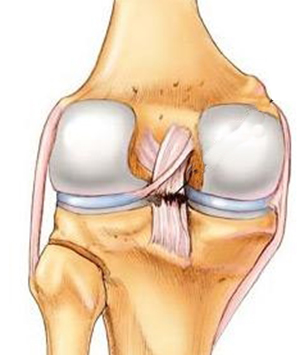
The Anterior Cruciate Ligament (ACL) is one of four major ligaments (ligaments connect bone to bone) of the knee joint that coordinate function and promote stability of the knee joint. It runs in a notch at the end of the femur (intercondylar notch) and originates at the back part of the femur (postero-medial aspect of the lateral femoral condyle) and attaches to the front part of the tibia (tibial eminence). In the knee, the ACL prevents forward movement of the tibia. It also provides roughly 90 percent of stability in the knee joint.
Your doctor may conduct physical tests, MRI and take X-rays to determine the extent of damage to your ACL. Most of the time you will need reconstruction surgery
The surgery is called an endoscopic ACL reconstruction and is done using small instruments through a Band-Aid size incision. It is done either on an outpatient basis or you may have to spend the night in the hospital. After four to six months, you should be able to return to unrestricted activity and competitive sports.